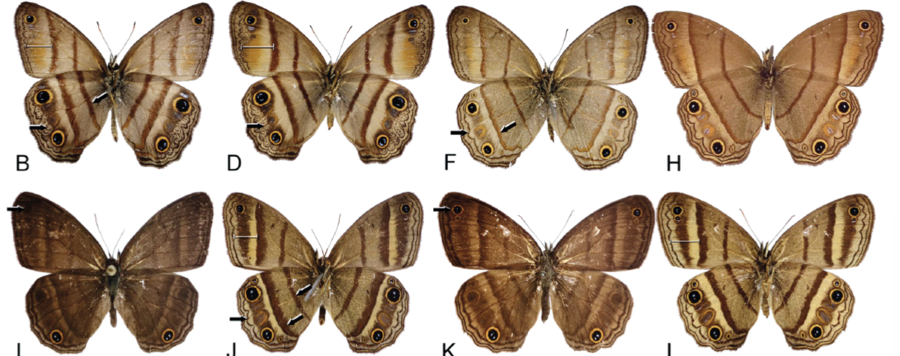
Systematics of the butterfly genus Cissia Doubleday, 1848 (Lepidoptera: Nymphalidae: Satyrinae) using an integrative approach
The genus Cissia Doubleday, 1848 is revised and its monophyly is tested using Maximum Likelihood analysis based on three genes (COI, GAPDH and RpS5). A new taxonomic arrangement is proposed based on molecular and morphological evidence, and Cissia now comprises six species, C. penelope (Fabricius, 1775), C. pompilia (C. Felder & R. Felder, 1867), C. proba (Weymer, 1911), C. eous (Butler, 1867) comb.n., C. phronius (Godart, [1824]) comb.n. and C. rubricata (W.H. Edwards, 1871) comb.n., distributed from the Southern US to Argentina. The remaining species previously treated in Cissia are here cited as “Cissia” until they can be removed to undescribed genera in upcoming papers. Euptychia moneta Weymer, 1911, E. austera Butler, 1867 and Paryphthimoides kiliani Anken, 1999 are new synonyms of Cissia penelope, C. pompilia and C. eous, respectively. Neotypes of Euptychia moneta, Satyrus phronius and Neonympha rubricata are designated, as well as the lectotypes of Neonympha pompilia, N. thelete Snellen, 1887, Euptychia usitata Butler, 1867, E. pieria Butler, 1867, E. erigone f. proba Weymer, 1911 and E. eous. The results confirm that is possible to distinguish most of the species of Cissia based on both morphological and molecular data, althougth C. rubricata shows some differences in the male genitalia compared to its sibling species.





